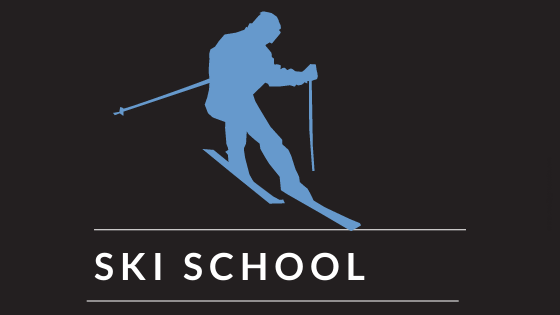To learn to ski, you’ll need to learn 3 basic skills: standing up; turning; stopping. To stand on skis, have your feet shoulder width apart with your toes pointing inwards; this creates a triangle / V shape (referred to as a ‘snow plough’). Slightly bend your knees to create a more stable stance, spread your arms out wide to give yourself more balance and lean slightly forward instead of leaning slightly back (doing so makes it easier to turn and stop).
Moving forward / down is no problem as your skis will automatically do so on even the slightest slope. To go faster, make the triangle / V shape of your skis smaller at the back (i.e. move your heels closer together) and, to slow down or stop, turn your toes more inwards and push your heels further apart.
To turn on skis, you just need to point your skis in the direction that you want to go (i.e. point your skis right if you want to turn right and turn your skis left if you want to turn left), but in practice it’ll take some time to master (balance and timing being the important factors).

For sharper turns, you’ll need to move your weight from foot to foot (i.e. to turn sharply to the right, put more weight on your left foot and, to turn sharply to the left, put more weight on your right foot) as well as pointing your skis in the direction that you want to go.
It is not hard to learn to ski. However, it is best to take some classes in ski schools from trained instructors, rather then from family or friends. At Baqueira Beret ski resort you could take clases de esqui Moga from Moga ski school.
To ski safely and properly, you need to wear ski clothing that protects you against cold temperatures, external humidity and internal dampness, and, for a week of skiing, it’s recommended that you take with you: fleece top x 3; sweater x 3; goggles x 1; hat x 1; headband x 1; thermal underwear x 2 sets; ski gloves x 1 pair; ski jacket x 1; ski pants x 1; ski socks x 3 pairs; sunglasses x 1.
Check that you have all the necessary skiing equipment, and that it’s in good, working condition. Your boots, bindings and skis should all be tailored to your weight, height, and level of expertise and should be checked over by a certified ski shop after every prolonged absence of use. Your clothing must be wind and water resistant and should keep you adequately warm (your head, hands and feet being particularly susceptible to the cold).


